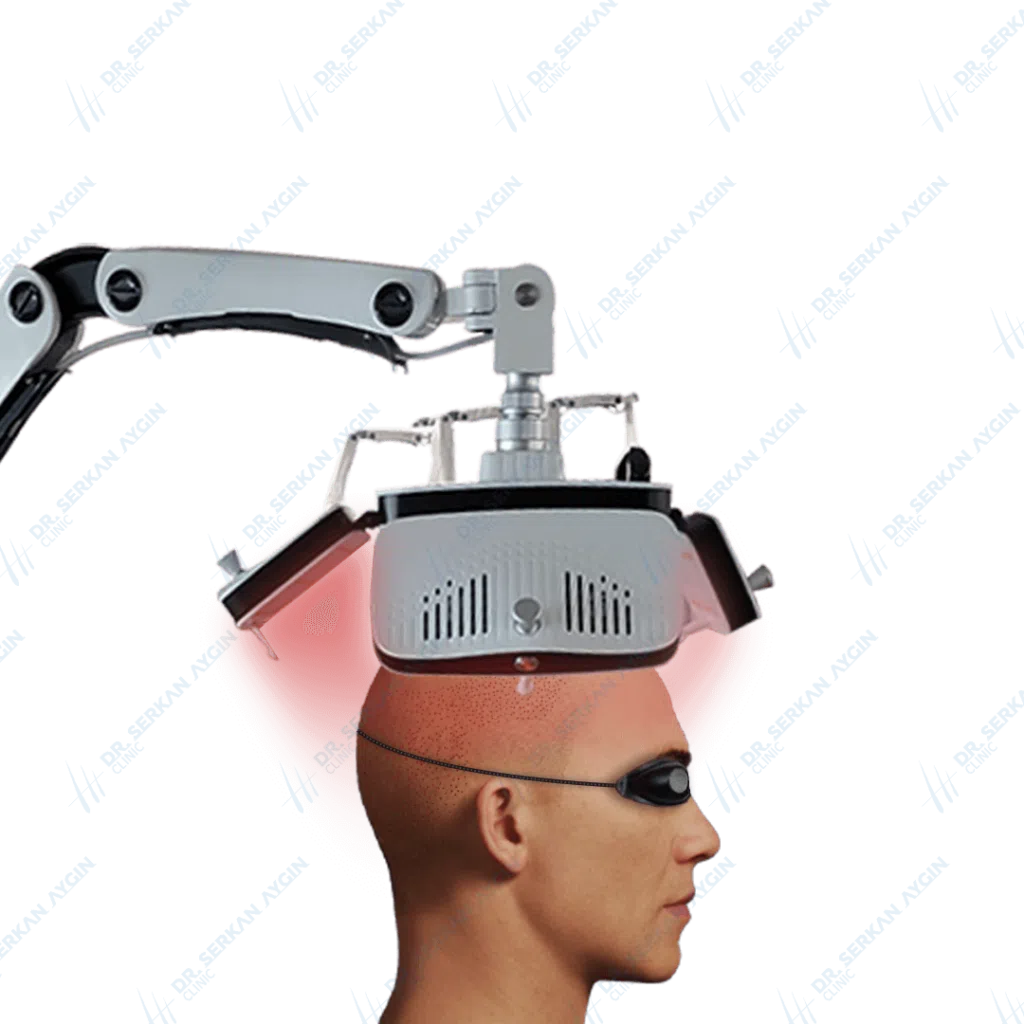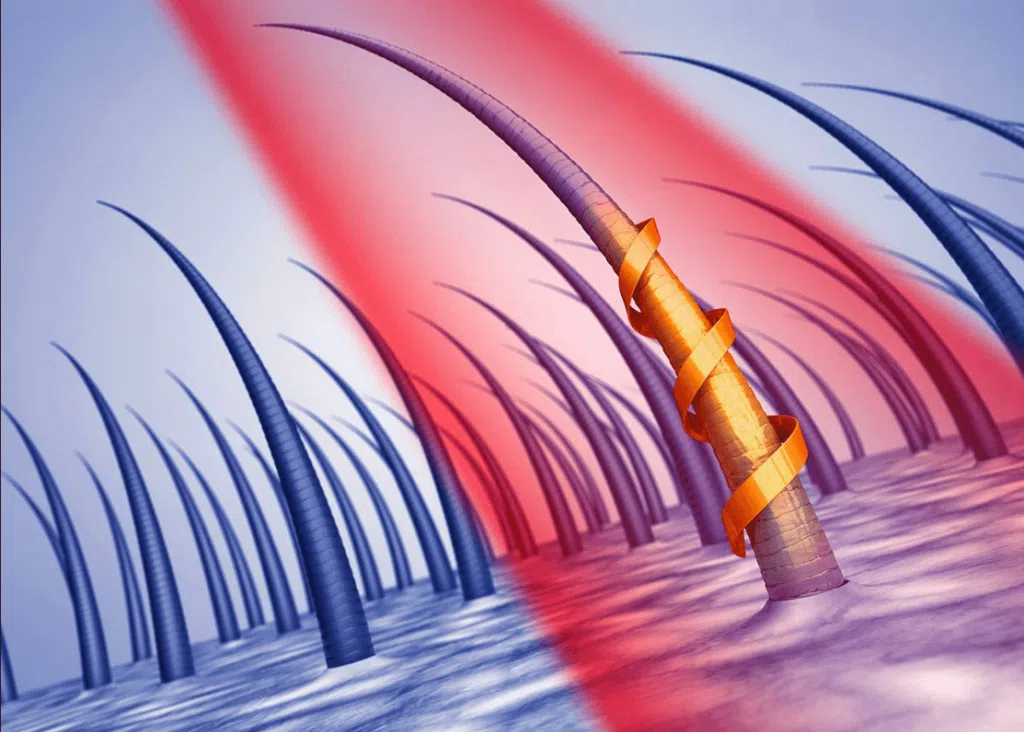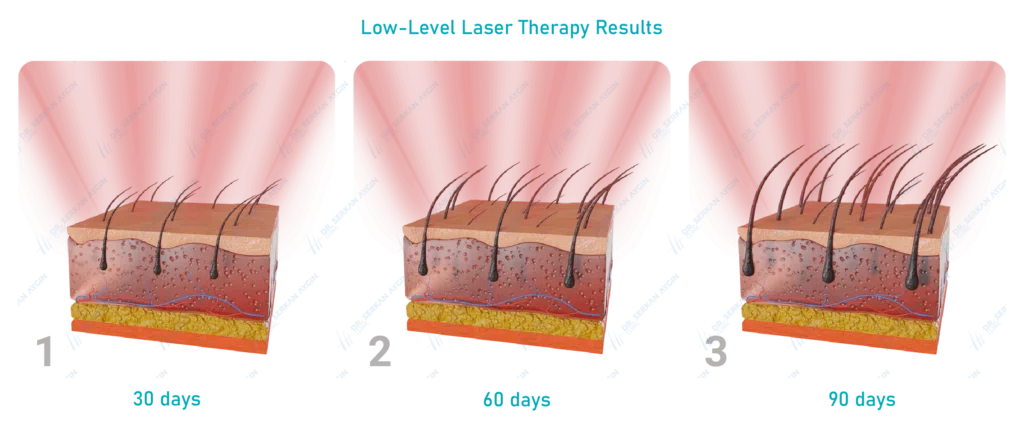Low-Level Laser Therapy (LLLT) is an American Health Organization (FDA) approved laser treatment. It can be used in different parts of the body to increase the speed and quality of tissue repair, regeneration, scarring, wound healing, as well as to reduce inflammation. Other names for Low-Level Laser Therapy (LLLT) include cold laser, red light laser therapy, photobiomodulation (PBM), biostimulation laser, therapeutic laser, soft laser, and laser acupuncture. While high-powered lasers damage tissue, low-powered lasers are proven to stimulate the tissues and to boost the functions of cells.
This therapy method has been used in Eastern Europe and Asia for the treatment of numerous health conditions for many years, including to stimulate hair growth. Doctors, dentists, physical therapists, and other medical professionals use LLLT in a variety of other ways.

Low-Level Laser Therapy for Androgenic Alopecia
LLLT has become a popular alternative for treatment of Androgenic Alopecia (male pattern baldness). It works by directing photons from between 800 and 860 nanometres on the light spectrum at a person’s scalp. This red laser light triggers the bio-stimulation of hair cells in the scalp and hair follicles.
The bio-stimulatory effects of cold laser therapy on the scalp is to prolong Anagen (growth phase), stimulate the re-entry of Anagen from Telogen (resting phase) and prevent early transition to Catagen (transition phase). This also leads to the production of terminal hair from follicles that have been producing Vellus hair.
These low-level lasers penetrate the scalp at 3-5 mm and supply cell energy and nutrition for hair follicles. The main goal of this application, which has been proven to be therapeutic in genetic hair loss in both men and women in previous scientific studies, is to increase the levels of Adenosine Triphosphate (ATP) and Nitric Oxide in hair cells.

With low-level laser therapy, factors that cause hair loss and hair thinning can be eliminated by reducing the accumulation of DHT (Dihydrotestosterone) hormone. (This is a hormone frequently linked to hair loss, which suffocates and shrinks hair follicles.)
How Does Laser Hair Treatment Work?
- The photons of light act on Cytochrome C oxidase leads to the production of Adenosine Triphosphate (ATP).
- This is converted to cyclic AMP in the hair follicle cells.
- Release energy and stimulate hair growth.
- Excessive build-up of DHT is prevented.
Effects of DHT Hormone on Hair Follicles
Low Level Laser Treatments’ Regenerative Effects
The restorative effect of laser light on hair works similar to the growth and revitalization process of our hair after being under the sun for a long time. With its healing effects, this laser light is sent to the scalp with low energies. This regenerative laser light stimulates the hair follicles and provides repair.
“A 2014 study found that low-level laser therapy (LLLT) is safe and effective for hair growth in both men and women.”
“A 2013 study of 41 men aged 18 to 48 found that cold laser hair treatment provided 39 percent increase in hair growth over a period of 16 weeks.”
The effects of laser therapy are Photochemical (like photosynthesis in plants). Photobiomodulation uses specific wavelengths of infrared light to target our mitochondria, stimulating cellular energy production. When the correct intensity and treatment times are used, infrared light reduces oxidative stress and increases ATP. This directly leads to improved tissue repair and reduced inflammation.
A 2018 European study have shown that LLLT stops hair loss in 85% of cases and stimulates new hair growth in 55% of cases. Increased circulation from photobiomodulation improves blood flow in the scalp and helps repair damaged cells, provide nutrients, and remove waste. In this way, Apoptosis cells (cell death) are prevented and therapy allows them to strengthen and continue to function instead of being destroyed as waste.
Dr. Serkan Aygın Clinic aims to stop hair loss by applying a low-level laser application that consists of 5 modules each giving energy from 364 sources, in 20 minute sessions twice a week. It increases hair thickness with long-term use. When hair loss is under control, the number of sessions needed can be lower to once a week. The results of the treatment begin to be seen within 6 to 12 weeks.
Low-Level Laser Therapy with Hair Transplants
Hair transplant patients visiting Dr. Serkan Aygin Clinic from abroad may opt for a single session of LLLT the day following their transplant. This can promote a healthy, expedient recovery and growth in the transplanted hair grafts, while also benefiting the growth and strength of all other hair follicles.

